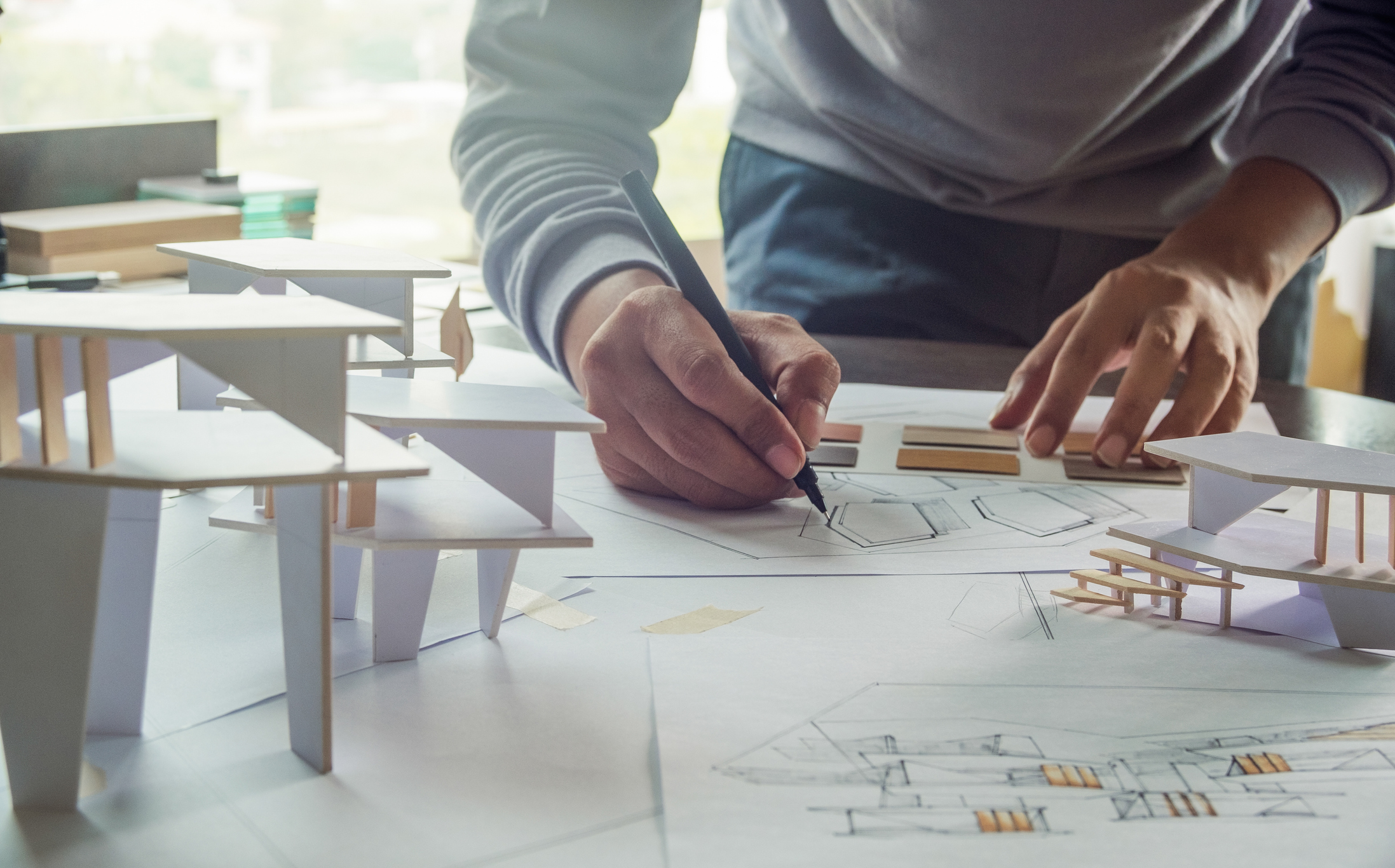Understanding the Diverse Occupation Paths Available for Aspiring Architect
As an ambitious Architect, you have a world of profession courses waiting for you. Whether you're drawn to traditional architecture or the nuances of lasting layout, there's a specific niche that lines up with your passions.
Typical Style: Designing Structures and Structures
Conventional design concentrates on creating buildings and frameworks that blend capability with visual allure. As you discover this area, you'll appreciate the intricate equilibrium in between form and objective. You'll discover to attract ideas from historical styles, integrating aspects like proportion, materials, and craftsmanship. Your layouts can show cultural heritage, showcasing neighborhood traditions while fulfilling modern needs.
You'll establish skills in drafting, model-making, and website evaluation, enabling you to picture and connect your concepts properly. Involving with customers, you'll need to comprehend their vision and equate it into possible designs.
In addition, constructing codes and sustainability methods are vital in your job, ensuring your frameworks are ecologically friendly and risk-free. As you grow in your occupation, you'll locate possibilities in domestic, business, or even restoration jobs, each offering one-of-a-kind challenges. Embracing standard architecture paves the way for a fulfilling occupation that admires the past while forming the future.
Urban Preparation: Shaping Areas and Public Spaces
As an ambitious Architect, you can play a necessary function as a city organizer, transforming how communities connect and function. By utilizing community engagement techniques, you'll ensure that locals have a voice in forming their environment. Plus, integrating lasting style principles will help produce areas that not only meet today's requirements but additionally protect the future.
Role of Urban Planners
While lots of may think of engineers as the sole enthusiasts behind structures, metropolitan planners play a vital duty in shaping the broader landscape of communities and public areas. By working together with different stakeholders, you'll help create parks, transport systems, and residential locations that advertise social interaction and access. Your experience in spatial style and neighborhood characteristics permits you to picture future development while protecting cultural heritage.
Area Interaction Strategies
Efficient area involvement approaches are essential for urban coordinators to ensure that the voices of homeowners are listened to and valued in the planning process. To foster purposeful dialogue, you ought to focus on open discussion forums and workshops where neighborhood members can reveal their ideas and worries. Usage surveys and social media sites to reach a wider audience, guaranteeing varied perspectives are consisted of. Working together with local companies can improve trust and assist in much deeper links. It is necessary to give clear info regarding decision-making processes and suggested jobs, allowing citizens to really feel educated and encouraged. By proactively including and paying attention comments, you'll produce spaces that mirror the neighborhood's demands, eventually bring about more sustainable and successful city settings. Embrace transparency and continual discussion for long lasting impact.
Lasting Design Principles
When creating urban rooms, integrating sustainable design principles is crucial for producing settings that flourish both environmentally and socially. Take into consideration incorporating green areas, like parks and yards, to enhance biodiversity and improve air high quality.
Designing with water conservation in mind is also crucial-- consider rain gardens and permeable surfaces to manage stormwater. Involving neighborhood participants during the preparation process assurances that the spaces you produce satisfy their needs and encourage social communication. By accepting these concepts, you'll add to dynamic, sustainable metropolitan landscapes that profit everybody.

Landscape Style: Developing Sustainable Outdoor Atmospheres
As you explore landscape design, you'll uncover necessary design principles that develop functional and lovely exterior areas. Sustainable techniques play a crucial role in making certain these environments grow while minimizing environmental influence. Plus, you'll find a variety of job chances that enable you to make a genuine distinction in just how individuals interact with nature.
Design Principles in Landscape
Comprehending layout principles in landscape architecture is crucial for producing lasting outside atmospheres that integrate with nature. You'll require to ponder aspects like proportion, range, and equilibrium to assure your layouts really feel cohesive and inviting. Integrating native plants not just improves biodiversity but likewise reduces water use, making your landscape durable. Think regarding the flow of space and exactly how people engage with it; paths and seating areas must welcome exploration and relaxation. Furthermore, pay attention to seasonal adjustments, creating with materials that enhance the environments year-round (Architect). By prioritizing sustainability and looks, you can develop outdoor areas that improve the area and promote wellness. Welcoming these concepts will set a solid foundation for your job in landscape style.
Sustainable Practices Overview
Sustainable techniques in landscape design not just concentrate on looks yet likewise prioritize eco-friendly health and source preservation. By integrating indigenous plants, you improve biodiversity and decrease the requirement for chemical plant foods and chemicals. Applying effective watering systems assists preserve water and lessens overflow, securing neighboring ecosystems. You can create areas that advertise dirt wellness, such as utilizing organic products and practicing permaculture concepts. In addition, including eco-friendly facilities, like rain yards and porous sidewalks, aids in stormwater administration and decreases metropolitan heat. You contribute to a much healthier earth and offer spaces that cultivate area connection when you produce exterior environments with sustainability in mind. Eventually, these techniques ensure your styles benefit both people and the setting for many years to find.
Occupation Opportunities Exploration
With a solid foundation in sustainable practices, landscape design offers a range of job paths that enable you to make a significant effect on the environment. You might work as a landscape designer, developing visually pleasing and useful outdoor rooms, or focus on environmental reconstruction, aiding to revive broken ecological communities. Urban organizers frequently work together with landscape engineers to create green spaces in metropolitan settings, enhancing city livability. If you're passionate regarding education, think about coming to be a landscape architecture educator, motivating future generations. In addition, you might work with nonprofits focused on environmental sustainability or take part in research study to introduce new techniques. Each my company course not only forms stunning environments yet also fosters click this site a healthier earth for future generations.
Lasting Layout: Concentrating On Eco-Friendly Practices
As you explore your occupation in architecture, embracing green practices can set you apart in a competitive field. Lasting style concentrates on developing buildings that lessen environmental influence while improving passenger well-being. By integrating renewable materials, energy-efficient systems, and lasting structure strategies, you'll add to a greener future.
Start by acquiring expertise of eco-friendly accreditations like LEED or BREEAM, which can reinforce your credentials. Think about exactly how all-natural light, ventilation, and thermal performance can enhance layout. Collaborate with designers and ecological professionals to introduce options that reduce waste and conserve resources.
Don't fail to remember the value of community involvement-- interesting local stakeholders can influence styles that balance with the setting. As customers significantly focus on sustainability, your know-how in green practices will certainly not just attract projects yet likewise meet your enthusiasm for liable style. Accept this important facet of the career, and see your career thrive.
Historical Conservation: Shielding and Recovering Social Heritage
While you start on your building journey, think about the necessary role of historical conservation in keeping our cultural heritage. This field focuses on the security and reconstruction of considerable structures, websites, and frameworks that inform the tales of our past. By participating in historical conservation, you'll aid guard the architectural heritage that shapes area identification.
As a historic conservation Architect, you'll analyze historic relevance and evaluate the condition of frameworks. You'll work carefully with chroniclers and conservationists to guarantee genuine reconstruction methods are employed. This job course allows you to mix creativity with research study, enabling you to make remedies that value initial materials and craftsmanship.
Your job not just adds to sustainability by recycling existing buildings yet likewise fosters a sense of satisfaction within areas. Welcoming this course will certainly aid you come to be a guardian of background, protecting the stories and looks that improve our lives.
Interior Style: Enhancing Indoor Spaces
Historic preservation and indoor architecture both share a dedication to boosting the constructed atmosphere, but they concentrate on various aspects. While historical conservation highlights maintaining a framework's cultural and historical worth, interior style zeroes in on optimizing interior rooms for performance and appearances.
As an aspiring Architect, you'll locate that indoor style allows you to mix creativity with technical skills. You'll design areas that not just look great however likewise promote convenience and efficiency. This field entails understanding exactly how light, color, and products interact within an area, influencing state of mind and use.
You'll work with numerous tasks, from domestic homes to business offices, guaranteeing that each environment meets the requirements of its owners. By focusing on customer experience, you can transform insides right into inspiring and practical areas, making a substantial effect on how individuals engage with their environments. Embrace the chance to improve indoor settings and shape the method people live and function.
Industrial Design: Combining Functionality With Visual Appeals
Industrial style plays a crucial duty in developing products that effortlessly blend next page aesthetics with functionality, making certain that what you use day-to-day is not just aesthetically appealing however additionally practical. As an aspiring Architect, you can involve on your own in this area, concentrating on creating everything from furniture to consumer electronics. Your job includes comprehending individual requirements, products, and producing procedures, enabling you to create innovative remedies that improve daily experiences.
In industrial layout, you'll frequently collaborate with marketers, designers, and makers, guaranteeing that your styles are not just lovely however likewise feasible. This profession course uses a dynamic environment where imagination meets practicality, making it a satisfying selection for designers interested in shaping the items of tomorrow.
Frequently Asked Concerns
What Educational Accreditations Do I Required to Become an Architect?
To end up being a designer, you'll need a specialist degree in architecture, normally a Bachelor's or Master's. Furthermore, you'll need to finish a teaching fellowship and pass the Architect Enrollment Examination to exercise lawfully.
Exist Qualification Needs for Different Architectural Job Paths?
Yes, there're accreditation demands for various architectural paths. Architect. You'll need to pass exams, complete internships, and sometimes seek specialized training, relying on your selected emphasis, like landscape architecture, metropolitan style, or historic conservation
What Software Application Skills Are Necessary for Architects Today?

Exactly How Can I Gain Practical Experience While Studying Design?
You can acquire useful experience by interning at building firms, taking part in design competitions, volunteering for area projects, or teaming up with classmates on real-world projects. These chances enhance your skills and build beneficial links in the market.
What Work Opportunities Exist Outdoors Conventional Architecture Firms?
You can explore various task possibilities outside conventional style companies, like city planning, indoor style, landscape style, building and construction administration, property advancement, and even functions in sustainability consulting. Each offers distinct obstacles and rewards.
Whether you're drawn to typical style or the subtleties of lasting style, there's a niche that lines up with your interests.When developing metropolitan spaces, integrating lasting design principles is important for producing atmospheres that prosper both environmentally and socially.As you explore landscape architecture, you'll find important layout concepts that develop gorgeous and useful outdoor areas.Recognizing design concepts in landscape design is vital for producing sustainable exterior atmospheres that harmonize with nature.In industrial layout, you'll often collaborate with marketing professionals, makers, and engineers, making sure that your designs are not only stunning but also practical.